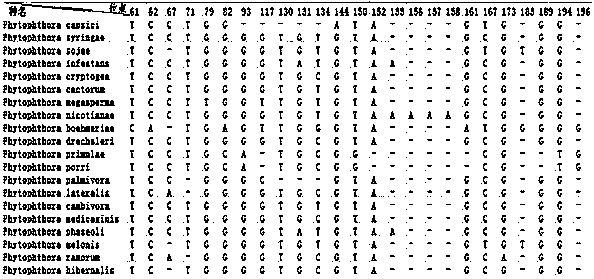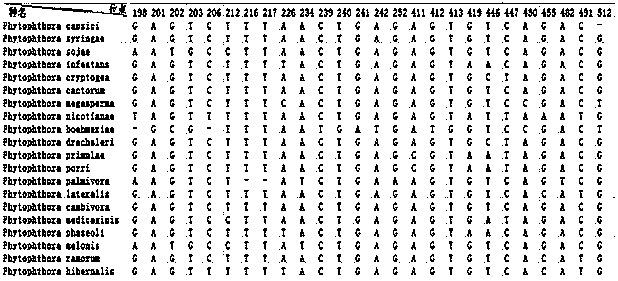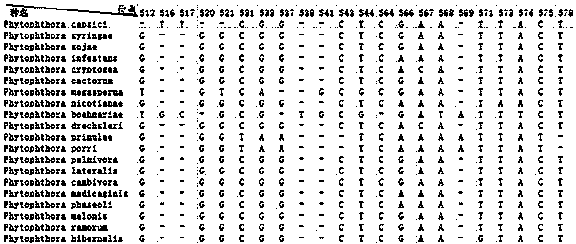Method for detecting or auxiliarily detecting Phytophthora bacteria
A Phytophthora genus and auxiliary detection technology, applied in the biological field, can solve the problems of high requirements for the culture environment, long time-consuming morphological identification methods, and low accuracy, and achieve the effect of accurate results, high accuracy, and simple methods
- Summary
- Abstract
- Description
- Claims
- Application Information
AI Technical Summary
Problems solved by technology
Method used
Image
Examples
example 1
[0027] The strain to be tested was donated by the National Key Laboratory of Plant Pathogenic Fungi of Nanjing Agricultural University and identified as Phytophthora capsici ( Phytophthora capsici ) strains, see the following references for the specific process of identification:
[0028] Zheng Xiaobo, Lu Jiayun. Distribution and mating types of Phytophthora species in East China and Northeast China. Journal of Nanjing Agricultural University, 1990, 13(3): 61-64.
[0029] Now adopt the method of the present invention to identify its species name.
[0030] (1) Genomic DNA of the strain to be tested was extracted, the ITS coding gene was amplified using universal primers (SEQ ID NO:5 and SEQ ID NO:6), and the amplified product was sequenced. The result is shown in SEQ ID NO:13.
[0031](2) Log in to the Phytophthora Database (http: / / www.phytophthoradb.org / ), and download the ITS coding genes of all Phytophthora (Phytophthora) bacteria. There are 143 ITS coding genes downloade...
PUM
 Login to View More
Login to View More Abstract
Description
Claims
Application Information
 Login to View More
Login to View More - Generate Ideas
- Intellectual Property
- Life Sciences
- Materials
- Tech Scout
- Unparalleled Data Quality
- Higher Quality Content
- 60% Fewer Hallucinations
Browse by: Latest US Patents, China's latest patents, Technical Efficacy Thesaurus, Application Domain, Technology Topic, Popular Technical Reports.
© 2025 PatSnap. All rights reserved.Legal|Privacy policy|Modern Slavery Act Transparency Statement|Sitemap|About US| Contact US: help@patsnap.com



